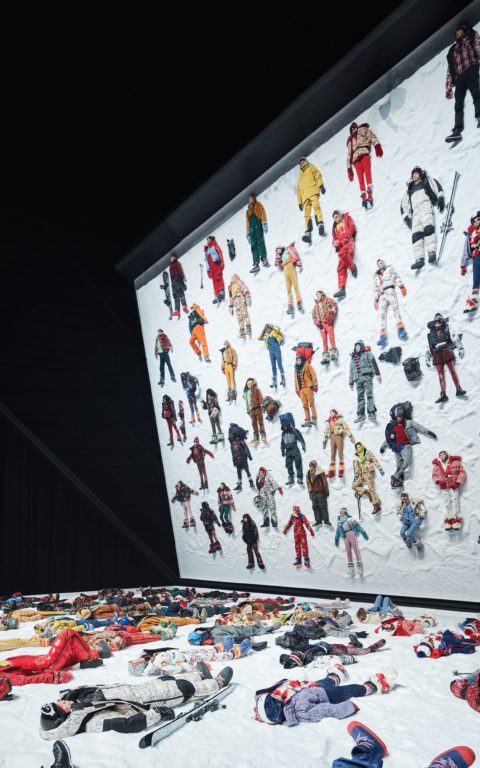Pierpaolo Piccioli and Moncler’s “Puffer Nun” Coat From Our October Cover Drops Today
It’s a good thing I’m not claustrophobic. Yet. But as the crowd closes in around me, squeezing me against the silver tented wall outside Craig Green’s collection for Moncler’s Genius project, it crosses my mind that I could be trampled. I’d become a fashion victim. Literally.
My eyes lock with those of the seriously intense security guard, who is attempting to usher some of the horde into the tented space behind him. He must sense I’m a) getting a little anxious or b) about to be crushed, because he suddenly reaches through the throng, grabs my hand and pulls me in. “Mille grazie,” I say. I think to myself, “This is more than a fashion moment; it’s a full-on fashion scene—an experience.” And that’s the point.
Earlier that week, Remo Ruffini, Moncler’s chairman and CEO, declared that the fashion show was dead. Instead, the luxury brand opened Milan Fashion Week with the launch of Moncler Genius—a capsule-style approach in which collections will be dropped monthly from June until December. In addition to its in-house team working on Moncler 2 1952 (its main line) and Moncler 3 Grenoble (its technical ski gear), the brand hired Valentino’s Pierpaolo Piccioli, Simone Rocha, Craig Green, Noir’s Kei Ninomiya, Fragment’s Hiroshi Fujiwara and Palm Angel’s Francesco Ragazzi to create their own takes on the company’s iconic puffer jacket.
“I have conceived the Moncler Genius project as a creative hub able to reinterpret the spirit of Moncler going beyond the concept of the season,” Ruffini said later via email, adding that the launch party at Milan’s newly renovated Palazzo delle Scintille was meant to be an emotional experience.

It’s definitely emotional. Instead of a runway show—where you take your appointed seat and watch passively as the models walk by—guests can randomly wander from tent to tent to view the different collections. Like in an amusement park, everyone—including me—is drawn to the one with the longest lineup. In this case, it’s Green’s sci-fi Michelin Man universe, where the models are wearing looks that resemble human life rafts. In the centre of the room, there’s an art installation with two vertical columns of inflatable tubes that are pumping up and down and emitting a sound that resembles an astronaut’s heavy breathing.
“Ideas of protection and functionality are at the heart of what Moncler is and something I have always explored in my own work,” the British avant-garde designer explained. “Protective forms, life aids and human life rafts are all ideas I explored in this collection, along with the balance between solid forms and an idea of lightness.” (If you’re not planning a lunar escape, the pieces he created for market are more street than abstract.)

While Green looked to the future, Piccioli was inspired by the Italian Renaissance, in particular the purity and shapes of the madonnas at that time. “For me, purity means something that is close to the essence of things,” he explained. “When you solve the complexity of things, you arrive at the simplicity. When you take everything out, what you get is more. Purity is when shape respects the essence.”
After the crush at Green’s tent, I eventually make my way to Piccioli’s tranquil space. The crowds have moved on to Simone Rocha’s tent, and I somewhat miraculously have a few moments to myself. The room is filled with Piccioli’s evocative “puffer nun” mannequins. (It’s the cape that our cover model, Maartje Verhoef, wore.) The room is softly lit, and the walls are adorned with works by monk-turned-artist Sidival Fila. It’s a serene and ingenious ending to my journey into Moncler’s Genius new world.
The story behind Moncler Genius’ other most memorable moments:
The post Pierpaolo Piccioli and Moncler’s “Puffer Nun” Coat From Our October Cover Drops Today appeared first on FASHION Magazine.

